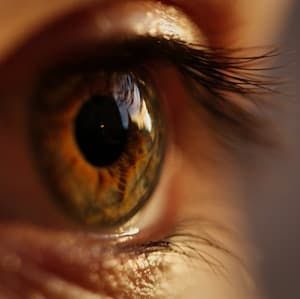Article
Long-Term Efficacy of Aflibercept, Ranibizumab Consistent in Eyes with Wet AMD
Author(s):
After a two-year intensive therapy period, visual acuity was maintained or improved in nearly half of the ranibizumab-treated group and more than half of the aflibercept-treated group, but severely declined during the post-intensive period.
Credit: Marc Schulte/Pexels

The long-term efficacy of aflibercept and ranibizumab was found to be similar in patients with exudative (wet) age-related macular degeneration (AMD), according to a recent analysis reporting on 7-year long-term outcomes after a 2-year-long intensive treatment period.1
Data suggests that almost half of the patients treated with ranibizumab maintained or improved best-corrected visual acuity (BCVA), while more than half of the patients treated with aflibercept did the same, with low numbers of injections. However, the mean visual acuity decreased significantly at the end of follow-up when compared to the end of the intensive phase.
“In a remarkable proportion of eyes, visual acuity declined severely during the post-intensive period which underlines the need for long-term follow-ups and may indicate a more prolonged intensive therapy,” wrote the investigative team.
Although anti-vascular endothelial growth factor (anti-VEGF) therapies have shown favorable efficacy for wet AMD, there is limited literature documenting their longer-term outcomes. Led by Andras Papp, MD, PhD, Department of Ophthalmology, Semmelweis University, investigators sought to evaluate the long-term benefits of intensive anti-VEGF therapy followed by a minimal number of injections in patients with wet AMD.
Clinical trial participants from two sites were recruited for a re-evaluation 7 years after the baseline visit of the phase 3 Vascular Endothelial Growth Factor Trap Eye Investigation of Efficacy and Safety in Wet Age-Related Macular Degeneration (VIEW 2) trial. During the first 2 years of VIEW 2 in the intensive phase, individuals were randomized per protocol to intravitreal aflibercept or ranibizumab treatment arms. After the intensive phase, all patients were followed under regular clinical care in real-life conditions and predominantly treated with ranibizumab anti-VEGF injections, administered pro re nata.
At the end of follow-up, the results were retrospectively analyzed. The primary outcomes of the study were changed in BCVA, change in size of geographic atrophy on fundus autofluorescence (FAF), and presence or absence of intra- or subretinal fluid on spectral-domain optical coherence tomography (OCT) at the end of follow-up. Secondary endpoints included the number of injections and potential adverse events.
A total of 47 eyes of 47 patients with AMD were included in the study, among whom 14 eyes received ranibizumab treatment and 33 eyes received aflibercept treatment. The mean number of injections was 17.8 ± 3.0 during the intensive phase of VIEW 2 and 19.5 ± 5.0 during the entire follow-up, according to study data. In the post-intensive phase, 14 of 47 eyes (30%) were given additional injections with a mean number of 5.7 ± 4.5, while the remaining patients received no injections.
Over a mean follow-up time of 82 ± 5 months, BCVA remained stable or improved (≤10 letters lost) in 55% of patients in the study population, in 43% in the ranibizumab group, and in 60% in the aflibercept group. Both groups combined were associated with a mean BCVA of 54 ± 13 letters at baseline, 65 ± 17 letters at the end of the intensive phase, and 45 ± 25 letters at the end of follow-up. There was no statistically significant difference in BCVA between the two groups at baseline (P = .88) and at the end of follow-up (P = .40), according to investigators.
At the end of follow-up, 96% of study eyes showed macular atrophy with an average area of 7.22 ± 6.31 mm2, and investigators found no significant difference between the groups (P = .47). However, there was a statistically significant correlation (P <.001) between BCVA and the area of atrophy. Moreover, 15% of eyes (7 of 47) showed disease activity as detected by fluid on OCT images.
“These data highlight that patients with exudative AMD need long-term follow-up and treatment can be necessary even after several years of disease detection,” investigators wrote.
References
- Lukacs R, Schneider M, Nagy ZZ, et al. Seven-year outcomes following intensive anti-vascular endothelial growth factor therapy in patients with exudative age-related macular degeneration. BMC Ophthalmol. 2023;23(1):110. Published 2023 Mar 17. doi:10.1186/s12886-023-02843-2





